C.A.R. TL8TT
TL8TT: 16th IDT DXpedition to the “Black Continent”
I find myself in the waiting lounge of the Bangui Airport, when Silvano (I2YSB) asks : “would you mind jotting down a few lines about our Dxpedition?”. I gladly go along with it (I cannot turn him down!), so, while overflying an unspecified African desert, I take advantage of these few hours of flight to narrate our adventure in the the Central African Republic (CAR).
I shall do my best to avoid repetitions, as compared to previous Dxpedition reports, but all our adventures have inevitably a common denominator: “ That’s Africa ! ” By the same token, however, every Dxpedition brings about surprises, stories, and new situations enriching our shared IDT experience.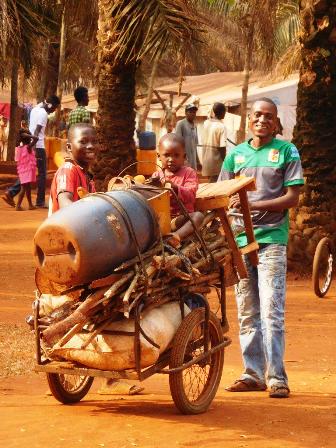
This time the dominating factor was heat. After so many trips to this continent we are used to the African climate, but we could not imagine having to face almost record levels of temperature: +46 °C (115 °F) outside, and +36 °C (97 °F) in the shack. Adding as bonus over 90% humidity with complete absence of air conditioning, it is up to your imagination figuring out the operating conditions throughout 14 full days in the Central African Republic.
It was about three years ago when, during our long telephone conversations, the possibility of operating from TL popped up. Our hopes were quickly quenched by safety considerations: up to a few months ago, in fact, CAR was in a state of dramatic civil war and all authorities contacted by us strongly advised against such a trip. The situation there began to normalize only in June 2016, this meaning that the civil war was repalced by a feeble truce, which however allowed us to consider this project with sufficient confidence. Following the reassuring news, Silvano became immediately active and, thanks to the most precious help of I1OJE (Billy) we met Father Federico, member of the Discalced Carmelites confraternity of Arenzano (Italy).
Father Federico lives in Bangui since many years, and, besides taking care of poor people in the Capital city, he also manages a seminary there, in a country among the most poverty-stricken ones in the world. During his visit to Italy in 2016 we had a chance to meet him and plan our trip there. A number of e-mail exchanges between him and Silvano got us the TT8TT licence first, and then the logistic organisation of our visit.
Bangui exhibits very few hotels, and the only one of acceptable level turned out to be way too expensive for us. We opted for a more practicable solution, even though unforeseen circumstances affected our budget quite heavily, as mentioned below.
Through Father Federico, or rather thanks to his “intercession”, we were hosted by a structure of the Benedectine Celestine Nuns, managed by a small but great Sister Assunta. The compound is located on the outskirts of the Capital city, fenced by a 3m high concrete wall; it comprises a wide garden, a church, two-story buildings for guests (mostly missionary priests or nuns) and a hospital manned by Italian volunteers. Everything under the control of Sister Assunta, who runs this outpost of civilization since 25 years with remarkable ability, humility and tenacity.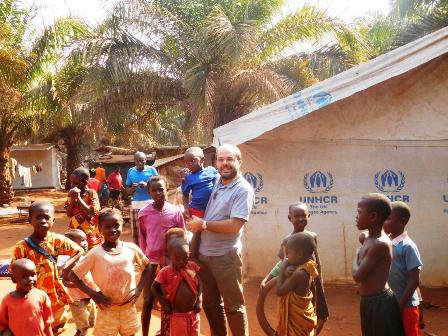
On receiving some pictures of the location we realized that it was the perfect place for us: lots of space, absence of surrounding obstacles, far from the chaotic city center, availability of power and, as a plus, Italian food…just the swimming pool was missing, but we gladly accepted !
Departure was in the afternoon from Malpensa airport on the 31st of January, headed to Casablanca. Usual questions by the Royal air Maroc personnel, who by now remember us and our special boxes, so that procedures have become routine. After a two-hour stopover, we fly from Morocco to Cameroun and from there to Bangui, the Capital city of the Central African Republic, where we land in the early morning of February 1st.
As soon as we debark, we realize why Father Federico recommended us to wear light clothes: we had left at -5 °C (23 °F) and find ourselves at +36 °C (97 °F), at 7 in the morning ! Thanks to Father Federico, who had checked our packing list with local airport customs beforehand, we get through with ease. We proceed to the Carmel cloister, to be greeted with an excellent Italian coffee. We meet there other Italian and African friars operating in that Mission and we fraternize easily with them. A short strech further on and we get to our final destination. We are welcomed by Sister Assunta, a short, friendly and very cute nun from Abruzzo. A few moments for planning stations and antenna placement, and the whole team begins setting up the equipment stored in 12 big boxes, for a total of about 300 kg.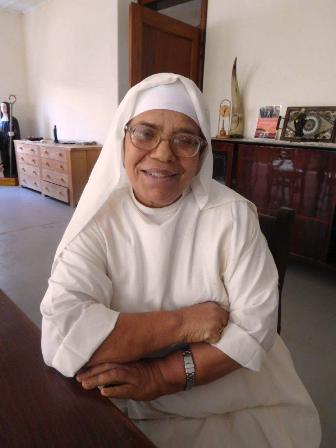
Vinicio (IK2CIO) and I (IK2HKT) set up radios and computers, Angelo (IK2CKR) and Alfeo (I1HJT) the verticals, Silvano (I2YSB) and Marcello (IK2DIA) the Yagis. The heat is fierce and we must stop antenna installation between 12 and 17 hours, since we risk a sunstroke. In spite of it, a partial setup is ready in the afternoon and at 16:37 UTC the first station is on the air on RTTY, followed by the CW one and finally, just before sunset, also the SSB station becomes operational.
Propagation being what it is, we had planned to concentrate on the lower bands. Since the first evening we plunged headlong on 40, 80 and 160m, where, to our surprise, we worked more than 200 Japanese, 1800 European and 240 americans in the first 8 hours, respectively. On 160m we exceeded the contacts of previous expeditions in just one evening ! In a couple of hours, the SSB station worked, 122 Japanese on 80m, followed by high-rate contacts throughout the night with USA and EU. A really good start.
Predictably, however, “that’s Africa !” was in store and ready to hit us again. Afteroperating for a few hours, we observed that our amplifiers were tripping at an increasing rate. At first sight, we believed that this phenomenon was not alarming, and that a more judicious sharing of the electrical loads between the various sockets could solve the problem, so we postponed the issue to the following morning. In the morning, however, we realized that the grid voltage was around 170V, at times even as low as 160V.
The only solution was to revert to the local 30kW for the entire period of our Dxpedition, with the hope that it could survive our intensive, almost continuous use. Luckily, the generator was very solid and had been serviced recently. A bit of relief came from the three daily meal breaks; for the rest, the deafening noise was our endless company throughout our stay. We had also to refurbish from scratch the electrical connections to the shack, since the previous setup had been tampered with months earlier and never restored since. All this took us by surprise, since we had not allowed in our budget for such a heavy expenditure for fuel, at a consumption rate of 5 liters/h (1,32 gal US/h). 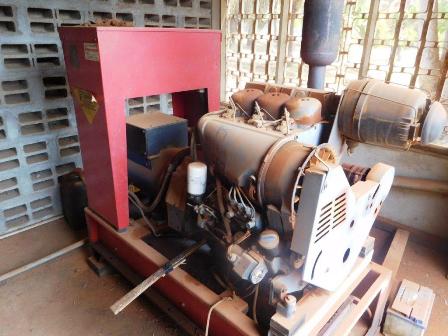 We had no choice, so we purchased tanks over tanks of fuel and organized refueling shifts for the generator. This was not enough, though, since the problem of internet, as usual in Africa, remained outstanding. The solution was to purchase two dongle keys and a WiFi router from two different telephone companies, so as to switch provider connections according to the unstable availability of this service. By now, internet connection is a “must” for our Dxpeditions, with our online log system allowing for a substantial reduction of dupes. In this respect we decided, after a few days of operation, to stop logging duplicate contacts. We always informed the correspondent with the standard “You are already in the log” (SSB) or “QSO B4” (CW and RTTY). At times we directed explicitly our correspondent to stop making dupes on the same band/mode. Some understood the problem, but others, to our surprise, insisted in trying to work us again and again in order to get a contact on the same band and mode on every day ! On SSB we explained at times that this behavior led to a waste of time, to irritation of the operators and in general to diminished chances for those waiting to work us. Others, definitely unwilling to understand, were threatened of being inserted on a “black list”. We strongly believe that time has come for stiffening our policy on duplicate contacts, given the availability of a real-time log to check one’s QSOs. We invest quite some money in providing this service since the very beginning of the operations. As a consequence, as from our next Dxpedition, the IDT will activate a mode by which duplicate QSOs will not be logged (save exceptional cases).
We had no choice, so we purchased tanks over tanks of fuel and organized refueling shifts for the generator. This was not enough, though, since the problem of internet, as usual in Africa, remained outstanding. The solution was to purchase two dongle keys and a WiFi router from two different telephone companies, so as to switch provider connections according to the unstable availability of this service. By now, internet connection is a “must” for our Dxpeditions, with our online log system allowing for a substantial reduction of dupes. In this respect we decided, after a few days of operation, to stop logging duplicate contacts. We always informed the correspondent with the standard “You are already in the log” (SSB) or “QSO B4” (CW and RTTY). At times we directed explicitly our correspondent to stop making dupes on the same band/mode. Some understood the problem, but others, to our surprise, insisted in trying to work us again and again in order to get a contact on the same band and mode on every day ! On SSB we explained at times that this behavior led to a waste of time, to irritation of the operators and in general to diminished chances for those waiting to work us. Others, definitely unwilling to understand, were threatened of being inserted on a “black list”. We strongly believe that time has come for stiffening our policy on duplicate contacts, given the availability of a real-time log to check one’s QSOs. We invest quite some money in providing this service since the very beginning of the operations. As a consequence, as from our next Dxpedition, the IDT will activate a mode by which duplicate QSOs will not be logged (save exceptional cases).
Back to propagation issues, we found what was expected: in spite of many “incursions” on 10 and 12m at all times of night and day, we logged (just!) 2314 QSOs on 10m and 2830 QSOs on 12m, equally shared between SSB and CW. Unfortunately, no Americans or Japanese on these bands, who on the occasion of previous expeditions were a major presence. It was slightly better on 15m, with 9113 QSOs, with more reasonable values on 17 and 20m. Obviously, the lower bands turned out to be favoured: 8581 QSOs on 40m (of which more than 5000 on SSB) and 4402 contacts on 80m, of which, 273 Japanese and 786 Americans.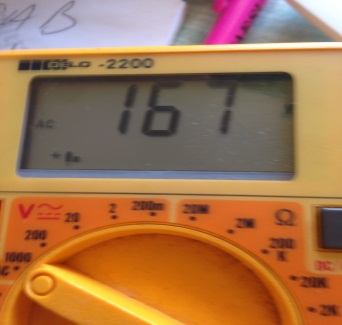 The greatest satisfaction came from the 160m band, with 2569 QSOs of which 178 Japanese and 388 Americans. Such a record achievement is to be credited to Silvano for the optimal antenna setup and to our CW operators IK2CKR Angelo, I1HJT Alfeo and IK2CIO Vinicio, who succeeded in giving many stations “new ones” for this band (several of them using just a tuned 40m dipole !).
The greatest satisfaction came from the 160m band, with 2569 QSOs of which 178 Japanese and 388 Americans. Such a record achievement is to be credited to Silvano for the optimal antenna setup and to our CW operators IK2CKR Angelo, I1HJT Alfeo and IK2CIO Vinicio, who succeeded in giving many stations “new ones” for this band (several of them using just a tuned 40m dipole !).
The 30m band was a different issue, with 4019 CW contacts logged (most of them by Silvano), all worked with a Delta loop set up hastily between two trees, but very efficient. The band displayed openings at unexpected times when compared to previous expeditions: the propagation has definitely shifted and for some years we shall have to live with anomalous openings (and closures), quite different from earlier years.
As announced, we operated on RTTY on only one band, i.e. 20m. This choice was made in order to offer as a chance to work this country to many operators as possible. Following our experience, operating on more bands would have resulted in more contacts with “known” stations, to the detriment of many “little pistols”. We prefer to make happy as many OMs as possible, since we believe that the purpose of a Dxpedition is precisely to maximize the number of “unique” QSOs in the log. On this occasion we believe that we reached our goal, having logged more than 20,000 different calls !
On SSB, the activity during the first week relied mostly IK2DIA Marcello and me, IK2HKT Stefano, while during the second week were joined by Mac JA3USA. The DVD that we mailed to our sponsors contains live recordings of many contacts, so that you may have a chance to hear what happens on the other side of the pileup. Alternating moments of dead calm and frantic activity were somewhat stressing, considering also propagation vagaries and the oppressing heat, but at the end we consider 30,003 logged QSOs on this mode a good result.
We finished with a grand total of 63,154 QSOs, of which 20,038 uniques. As usual, we paid a particular attention to operators using extreme conditions such as QRPers; we logged 142 QRP stations and 50 /M mobile stations. We consider this to be a good result, as we can imagine the excitement of those operators in receiving a 59 from us .… For these stations, we add to the conventional 59(9) report also the real RS(T), in order to provide our correspondents with realistic information on the performance of their setup. Each QRP QSO is often the result of many hours of efforts and waiting, sometimes displacements to locations more favorable than one’s QRA, time taken from family duties and other factors. We should keep these friends in high respect and appreciate their tenacity.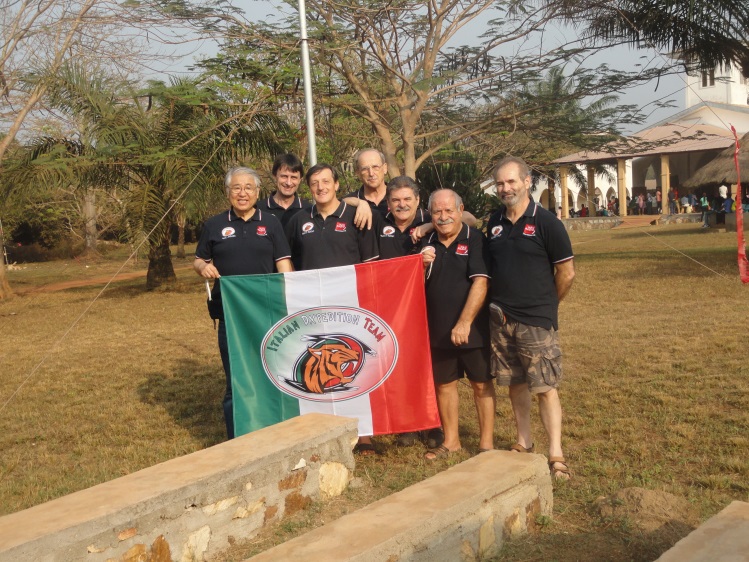
With the passing of time we understood better the local propagation features, which we strained to exploit at best on each band with our three stations: unceasing QSY to 10 and 12m during the day, to catch few barely understandable signals at the limit of sensitivity. On 15m only 48 Japanese stations, a suprisingly low number on their preferred band, but propagation did not offer any chance, either via long- or short-path (and, as Marcello says, also “via skewed…”). Lucklily, on 17m and below the situation was much better and we could log thousands of QSOs with Japan and the USA. Obviously, the Europeans took the lion’s share, and we wish to thank them for their patience when we were calling selectively “only USA” or “only JA”. Only rarely we had to scold someone, and in the majority of cases it was closed with a “sorry”.
Time went by very fast. In spite of the stifling heat and a wish for a cooler winter climate, we were reluctant to finish operations from TL8TT on February 14th, at 15:27 UTC. RTTY was the first station to QRT, followed by SSB and finally CW.
As for the setup phase, the team is well trained, each one having a well-defined task: it took us 2h and 40 minutes (the time frame planned by Silvano, and adhered to) to clean up (dust had accumulated everywhere!), disassemble and pack all equipment for the return flight. We said goodbye to Sister Assunta at 5 in the morning and, assisted by Father Federico, we went through customs at the airport.
In closing, I come back to Silvano asking me to jot down a few lines about our adventure. We are waiting to board the flight to Casablanca, where we shall wait for 15 hours (Royal Air Maroc delayed our final leg) and we should land at Malpensa on the 16th in the afternoon (while writing these notes we are still in flight).
In the end all is well, in spite of the most physically stressing Dxpedition to our memory. Yet this experience leaves beautiful memories and great respect for people who do so much for so many without asking for anything in return; a poor country among the poor ones, the third most needy in the world, split and destroyed by a civile war which has cut life expectancy down to a dreadful 40 years. We get back home valuing once more our good luck of living in countries where war is absent, where it is so normal to have running water in our homes, where a well-equipped supermarket is close by and where, most important, we live as free people. This the main lesson from this experience.
As usual, the IDT show must go on. See you soon, and thanks for your continuing support !
Stefano, IK2HKT – One of I.D.T.s
TL8TT antenna setup:
Nr. 2 SpiderBeam 10,12,15,17,20 m / Nr. 1 Yagi 2 elem. 10,12,15,17,20 m
Nr. 2 Vertical 40/80 m (one for cw and one for ssb) / Nr. 1 Delta Loop 30 m
Nr. 1 Vertical for 160 m / Nr. 1 Diamond Loop for rx / Nr. 1 DHDL for rx
Coaxial cable by: Messi & Paoloni
TL8TT equipment
Nr. 3 Elecraft K3 /Nr. 3 Elecraft KPA 500 /Nr. 3 Dunestar filter system (10 to 160 )
Nr. 3 Laptop running N1MM / Nr. 1 Server with IH9GPI’s real-time log online system
